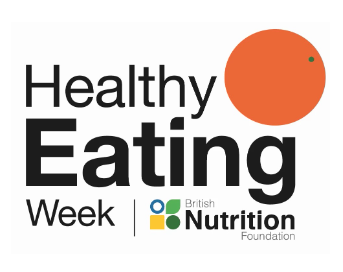
Published on: June 19, 2023
Healthy Eating week is a great opportunity to draw a line in the sand and start introducing some positive eating behaviours, writes Compass Health and Wellbeing Trainer, Danielle Grant.
As the Summer seasonal vegetables and fruits come onto the shelves, it is now much easier to create colourful salads that the whole family can enjoy. Take a look at some of the recipes on the ‘Nutrition.Org’ website for some inspiration at meal times.
During the different stages of our lives we go through changes and growth and sometimes illness, by introducing a healthy lifestyle and eating well we are giving our body the best chance at health and the opportunity to enjoy life. If you consider the nutrition required for children versus adults; or general population adults versus athletes you can start to understand how different groups would have differing requirements. One healthy woman alone can go through puberty, adulthood, pregnancy, lactation, perimenopause/ menopause and becoming elderly. Each stage has a different set of guidelines to consider if that female wants to remain healthy.
Perhaps this is the reason that so many people feel overwhelmed or avoidant and following a ‘Healthy Eating Plan’ as the guidelines can either seem far too generalised or far too complicated
Macronutrient is the term that refers to the main, more commonly known nutrients: Fat, Carbohydrate and Protein; with Fibre being put with this group also. Micronutrients refer to the smaller quantities or vitamins and minerals. It is true that the macronutrient and micronutrient quantities may vary in each of the stages of life, across genders and when facing illness.
Then there is the complication of food intolerances, religious practices and allergies; how can there be one diet for all these lifestyles!?
So, let us not get too bogged down with the complicated elements of nutrition, and focus on simple healthy eating.
My simple tips are based around accessible foods:
- All food provides energy, there is a myth that Carbohydrate is the ‘One for energy’ but in actual fact protein and fat give us energy too. If we put in more ‘energy’ than we use, then it is stored, simple.
- Protein should feature every day, for growth, recovery and repair. BUT you don’t need to eat meat every meal, or every day. Pulses, seeds, eggs, tofu, seafood, fish all contain protein.
- Vegetables can be eaten plentifully, and fruit can be eaten often. Consuming all the wonderful colours will help you access the different vitamins and minerals on offer. Literally, each colour vegetable can offer you a different type of micronutrient. Eat the rainbow!
- Fibre is key. It can help with digestion and creating lovely solid, easily excretable waste.
Fibre helps you feel full and slows down the insulin response. Grain based fibre, eg: oats, rice, wholegrain wheat can also be counted as carbohydrate intake. Fruit and Vegetable based fibre can help with your vitamin and mineral intake. (please note: whole fruits with skins and pulp, now smoothies).
In summary: Aim for Fibre every meal. Add protein once a day. Drink to hydrate.
Websites and sources:
https://www.nutrition.org.uk/healthy-eating-week/recipes/
https://www.nutrition.org.uk/health-conditions/
https://elht.nhs.uk/application/files/6916/7639/3728/eat_your_5_a_day.pdf

